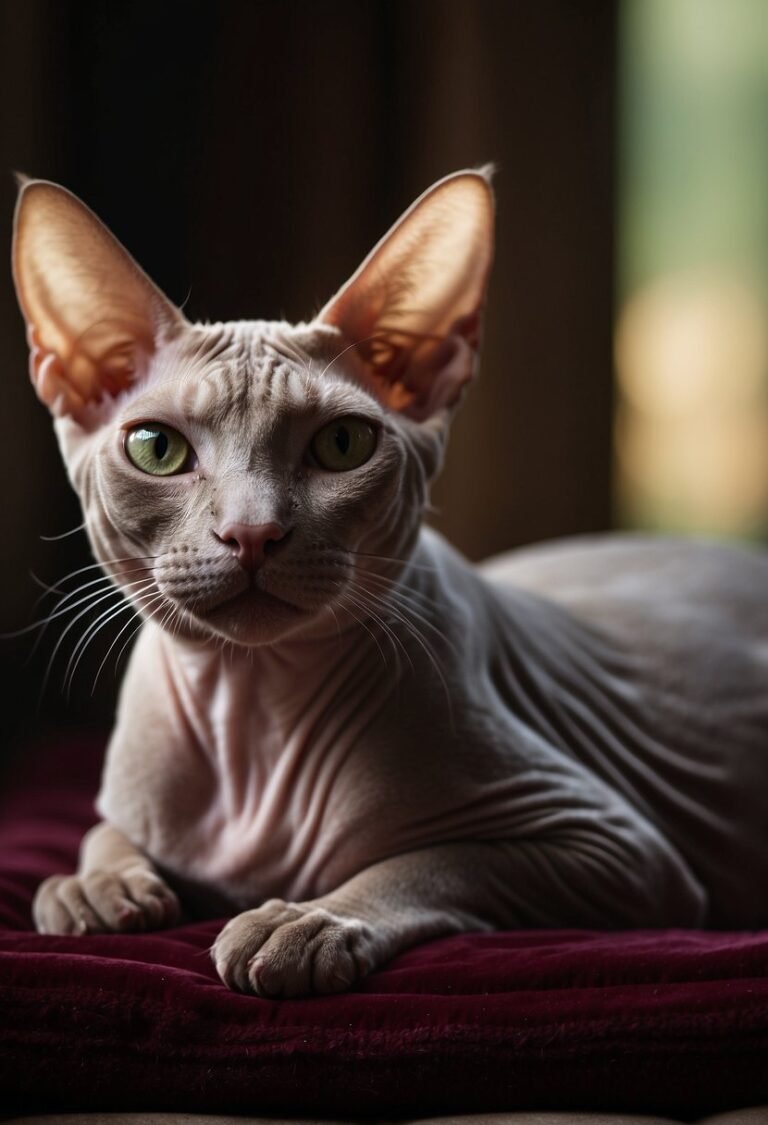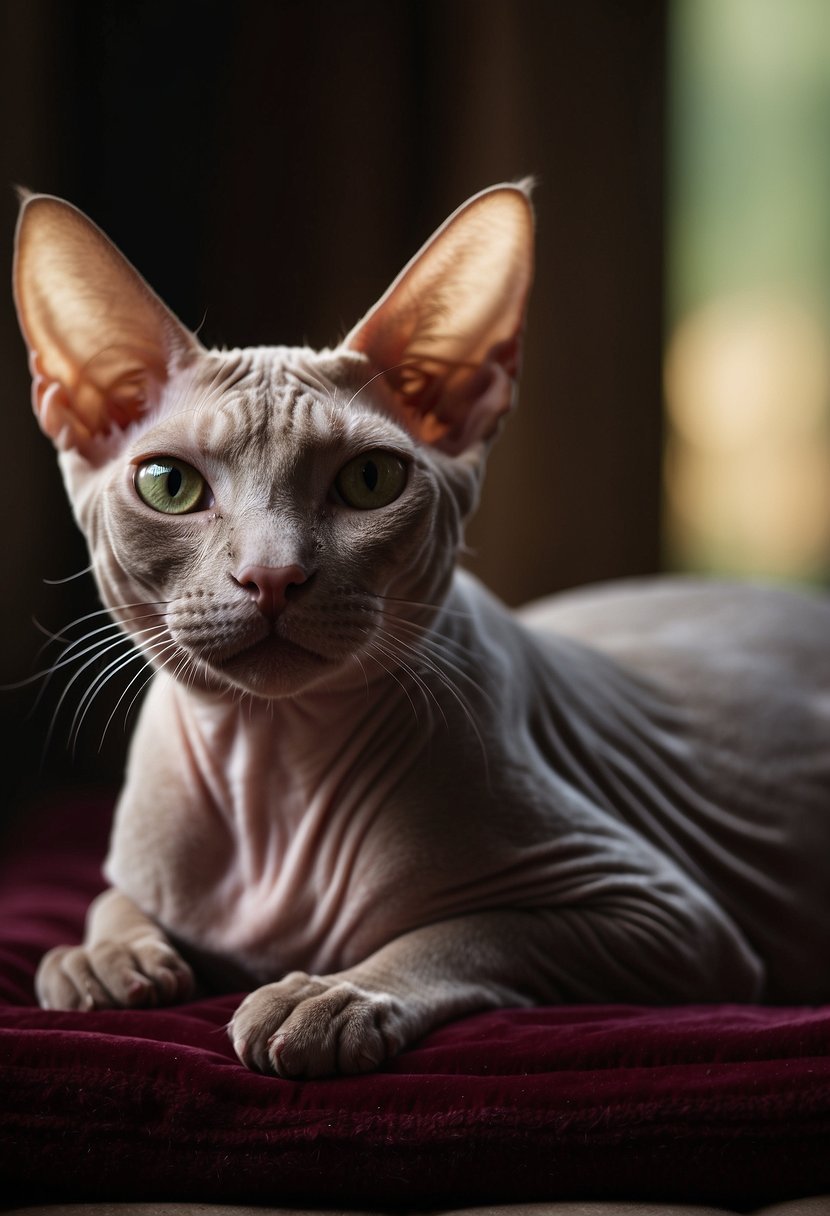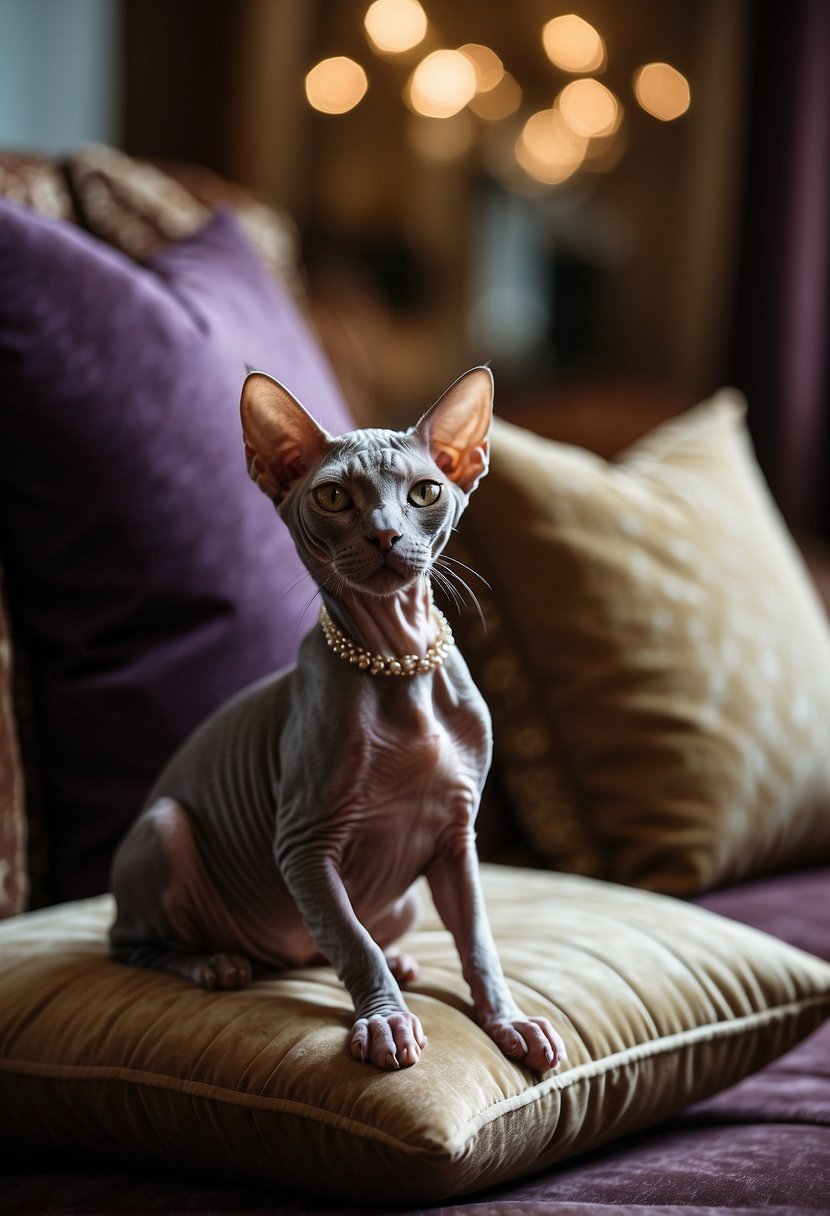Sphynx Cat Care Guide: Tips for a Happy, Healthy Feline

Sphynx Cat Origins

The Sphynx cat is a distinct breed, celebrated for its lack of fur and originating from Canada.
Its development as a breed began in the 1960s, thanks to a natural genetic mutation.
Breed Development
The journey of the Sphynx cat began when a hairless kitten named Prune was born in Toronto in 1966.
This was a pivotal event that sparked interest in creating a new breed.
Continued breeding of these hairless cats, combined with careful selection, established the breed standards we see today.
The modern Sphynx cat has ancestors like Bambi, Punkie, and Paloma, who also carried the hairless trait.
Genetic Traits
Your Sphynx cat’s hairless trait is due to a natural genetic mutation, which affects other cat breeds as well.
This mutation is recessive, meaning that both parents must carry the gene for a hairless kitten to be born.
Although called “hairless,” the Sphynx often has a fine layer of down which gives their skin the feel of chamois leather.
They are known for their significant heat loss and need for warmth, which is why you’ll often find your Sphynx basking in sunny spots or seeking the warmth of your lap.
Sphynx Cat Care
Caring for your sphynx cat requires unique attention to their health, grooming, and diet.
Let’s dive into what you need to know to keep your hairless companion happy and healthy.
Health Considerations
Sphynx cats are known to be susceptible to a genetic heart condition called hypertrophic cardiomyopathy (HCM), which leads to a thickening of the heart muscle.
Regular check-ups with your vet and echocardiograms can help monitor this condition.
It’s also important to keep them warm, as they lack a fur coat to do it naturally.
Grooming and Maintenance
Sphynx cats do not have a coat of fur, but they still require regular grooming to remove body oils that would normally be absorbed by fur. Bathing your sphynx once a week is recommended.
Clean their ears and trim their nails frequently, as oil can build up more quickly in these areas.
Diet and Nutrition
Your sphynx cat’s diet should be high in calories and fat compared to other cat breeds to help them maintain body heat and high energy levels.
A balanced diet with quality protein sources is essential.
Always ensure fresh water is available to keep your sphynx hydrated.
Sphynx Cat Lifestyle

The Sphynx cat’s lifestyle is truly unique, capturing the hearts of cat lovers with their playful antics and affectionate nature.
Their lifestyle is centered around their distinctive traits which set them apart from other cat breeds.
Behavioral Traits
Your hairless companion is known for being highly energetic and playful.
The Sphynx often displays a puppy-like demeanor, engaging in enthusiastic play sessions and showing a keen interest in their surroundings.
This breed’s intelligence means that they’re also fond of puzzle toys, which help keep their minds sharp.
- Playful: Enjoys interactive toys
- Curious: Explores every corner of the home
Social Interaction
Sphynx cats are amongst the most social and affectionate of cat breeds.
They thrive on human interaction and will often follow you around the house, seeking your attention and companionship.
Their gregarious nature also generally extends to other pets, making them a fantastic addition to multi-pet households.
- Affectionate: Craves your touch and attention
- Companionable: Gets along well with other pets
Environment Adaptation
These hairless wonders are sensitive to their environment due to their lack of fur.
A Sphynx cat requires a warm environment to maintain its body temperature, and it’s not uncommon for them to seek out sunbeams or snuggle under blankets.
You’ll need to be mindful of their exposure to extreme temperatures, especially cold.
Despite their adaptation needs, Sphynxes are quite resilient and have a robust health, provided they live in an environment that caters to their unique needs.
- Sensitive to Temperatures: Prefers warm, draft-free areas
- Adaptive: Can live comfortably indoors with proper care






